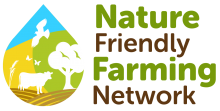While agriculture is a driver of greenhouse gas emissions, it also has a positive role to play in climate mitigation and there are many changes farmers and land managers can make to contribute towards achieving net zero.
Regardless of location, system or past, every farm can adopt simple solutions that will help reduce emissions, sequester and store more carbon, improve the fertility of our natural resources, protect habitats, enhance ecosystem function and prepare the farm landscape for the challenges of global warming.
We hope the actions in this guide will support you in your journey to climate-friendly farming.
Download the guide below.



